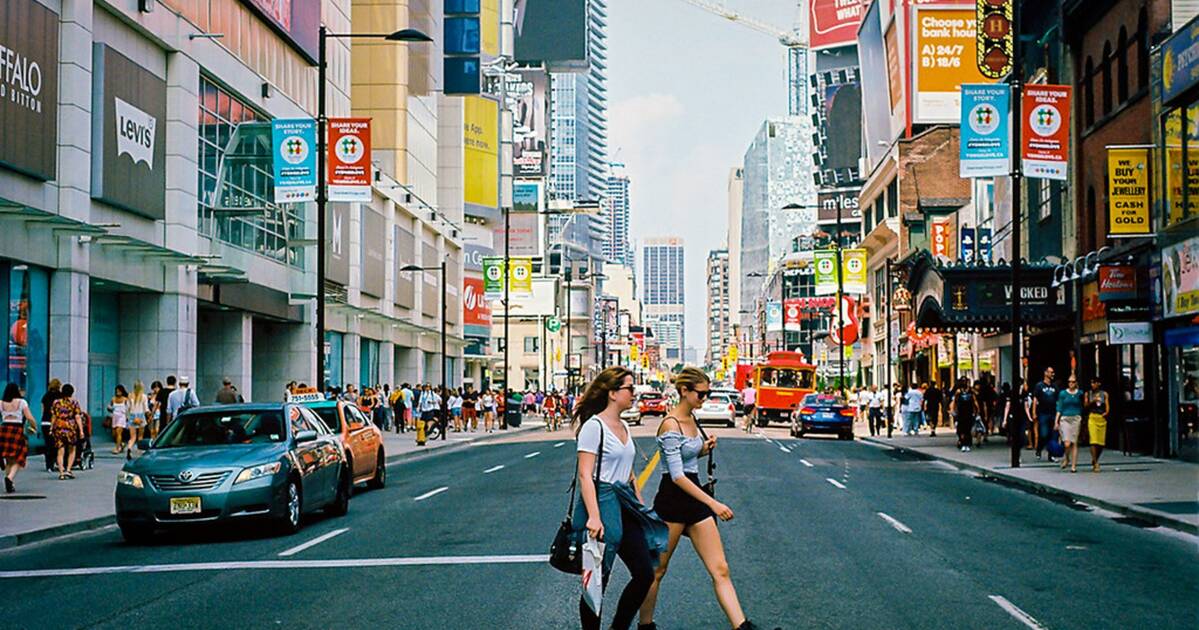
Being a pedestrian on Yonge Street in Toronto is often an absolute nightmare, but soon enough the street will undergo a complete redesign to better accommodate those on foot.
The City of Toronto is in the midst of carrying out a study as part of a project called yongeTOmorrow, which focuses on the section of Yonge Street from Queen Street to College/Carlton Street.
A number of changes are being considered to increase pedestrian space on this stretch, including eliminating cars altogether.
Here’s an update report on the yongeTOmorrow project, which will redesign Yonge Street to better accommodate the huge number of pedestrians. Preferred solution TBD, but estimated to cost $47.1 million with construction finished by 2027. https://t.co/BeRSgDkM4E pic.twitter.com/vQ84l0sj4X
— Matt Elliott (@GraphicMatt) October 9, 2019
Back in May, the City held a public event to focus on people’s future priorities for moving through Yonge Street in addition to a review of a long list of potential alternatives, including making the street car-free, having only one driving lane, two driving lanes or three driving lanes.
Now, a new report has been released — which includes a list of alternatives — and will be presented to the Infrastructure and Environment Committee (IEC) of City Council.
"Currently Yonge Street is struggling to serve the growing pedestrian demand. There is overcrowding and insufficient clearway on some sections of sidewalk," the report from the General Manager of Transportation Services reads.
The report states that the number of pedestrians on Yonge is expected to grow due to a projected doubling in population and employment in the surrounding area by 2041.
"Without improvement, the sidewalks will become critically deficient, risk pedestrian safety and deter significant economic and cultural investment."
And according to the report, between 1996 and 2016, walking and transit use on Yonge have increased, while driving has decreased.
Upwards of 75% of people using Yonge St are pedestrians, and it has a subway. But people are falling off the sidewalks b/c less than 25% of the space is for pedestrians. It's old school to give so much space to cars - they are no longer the backbone of the street. #WastedSpace
— Jennifer Keesmaat (@jen_keesmaat) October 11, 2019
Once the staff report has been presented to the IEC on October 17, a short list of alternatives will be presented and discussed at the next round of public consultation in November.
And though the exact cost of the project can't be known until a specific solution has been chosen and solidified, the estimated cost of implementation is approximately $47.1 million and construction is expected to span six years, from 2022 to 2027.
by Mira Miller via blogTO

No comments:
Post a Comment